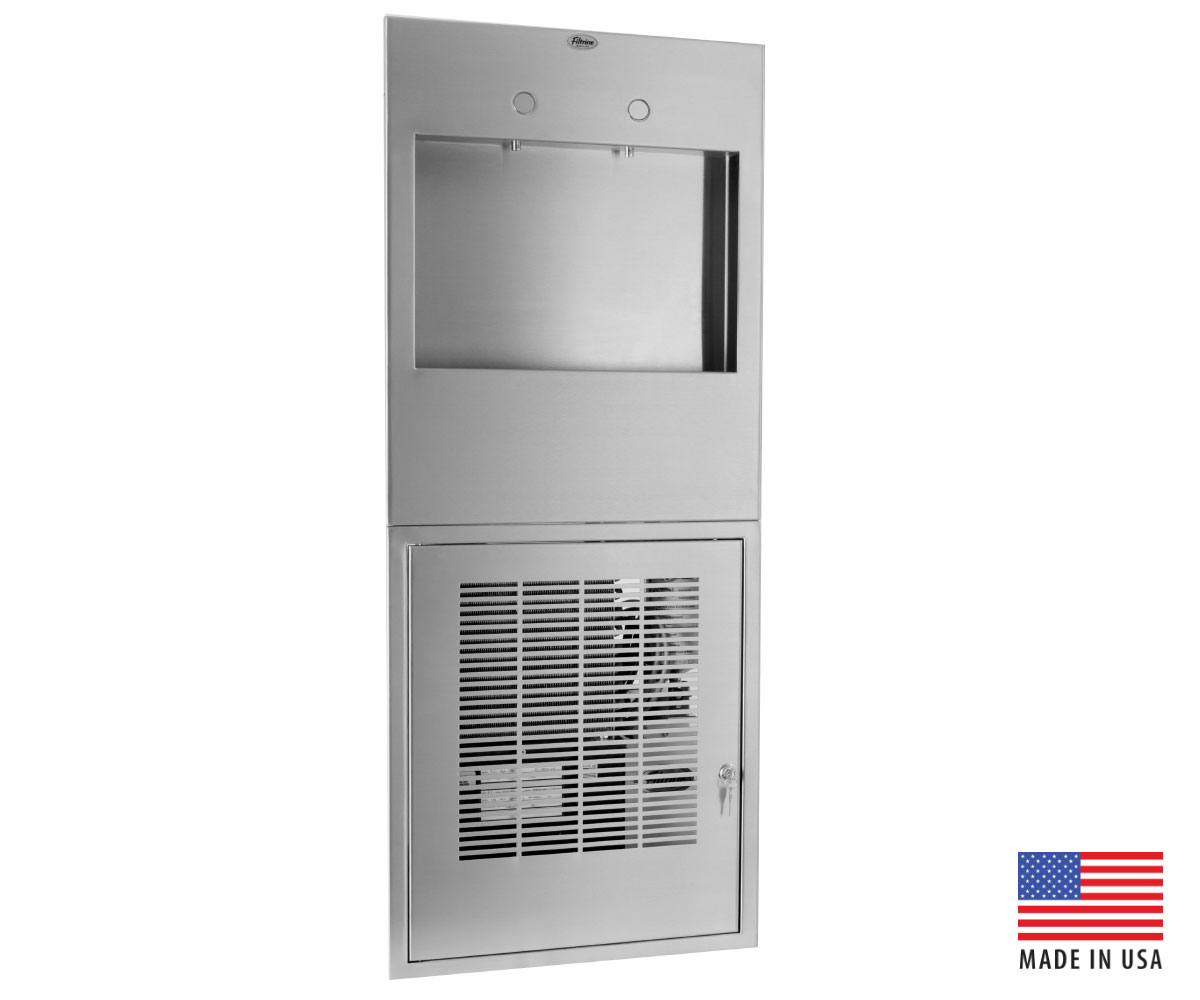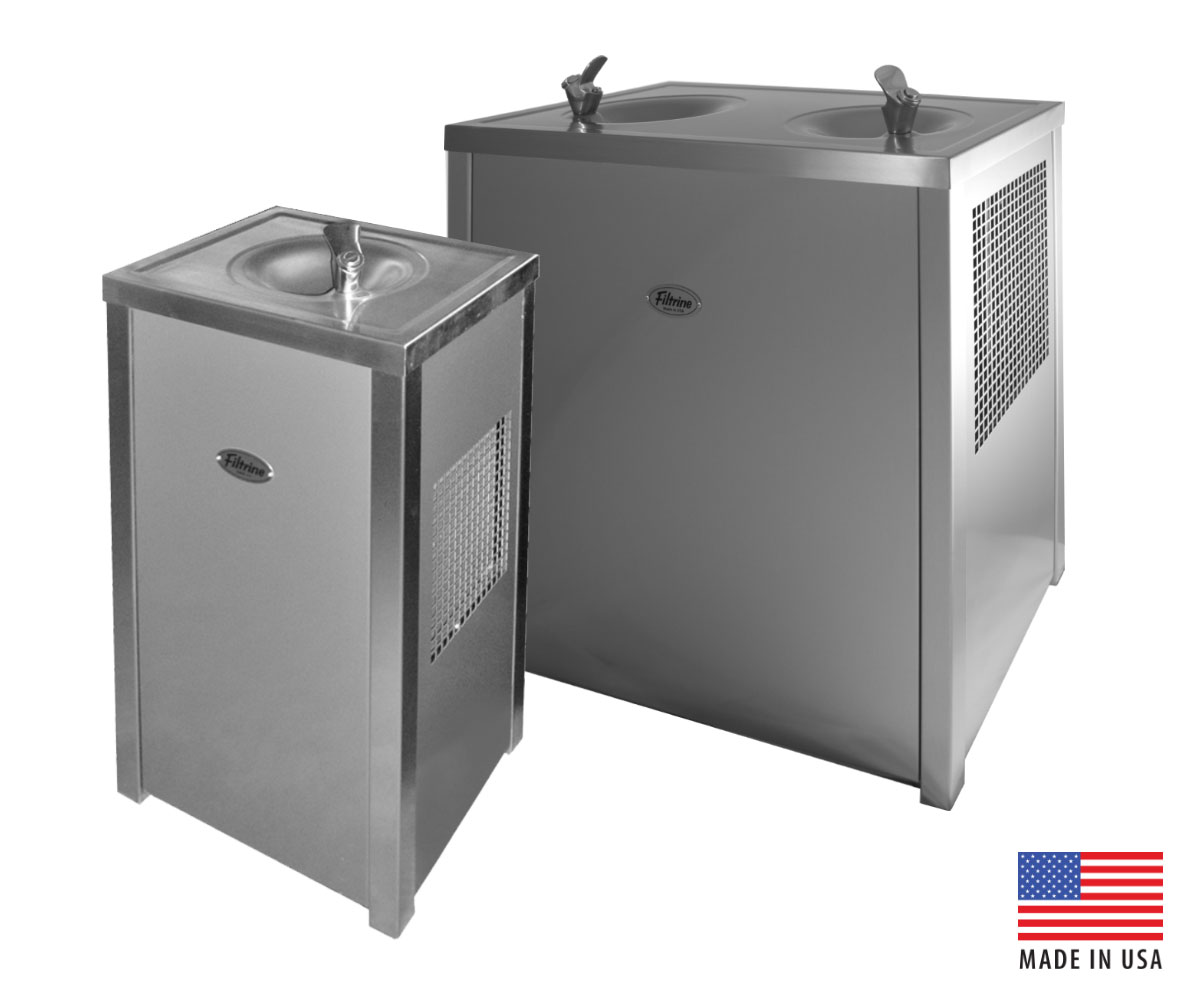Filtrine Drinking Fountains are a Prime Feature of Sculpture in Maine Schools
What does sculpture, schools and drinking fountains have in common? In the early 1980’s, Maine’s legislature voted to devote 1% of funds designated for public building construction to commissioning art installations. The goal was to make “public spaces more appealing, useful or accessible through the incorporation of artworks.” Roger Majorowicz, an internationally renowned sculptor and a Maine resident, submitted multiple proposals that were approved by ‘Percent for Art’ committees throughout the state. Two of these projects utilized Filtrine fountains and were installed in public school buildings.
The first one at The Middle School of the Kennebunks was installed in 2002 and called Millpond II. Majorowicz, originally from South Dakota, was inspired by western themes and used found objects to create his sculptures. Millpond II is a spectacular piece (10’H x 21-10”W) that features gears, mirrors and Filtrine’s Model 107-16 high/low fountain in stainless steel. A colleague of Majorowicz, Janet Redfield, remembers that “Roger obtained a bunch of large, convex mirrors (maybe polished metal, not glass) and he used them because they flipped the image upside down as you approached the fountain and then back to right side up. “ The fountains are so well integrated into the artwork that it’s hard to distinguish one from the other. He selected the ADA compliant “Soft Touch” stainless steel button valve for both fountains. (Any Filtrine drinking fountain can also be made touchless.)
The second installation was equally dramatic, though not quite as large (11’H x 15’ 7”W), and features a single Filtrine stainless steel fountain (Model 107-16). Majorowicz named this installation Millpond III and it was installed at the Greely Middle School in 2004. The metal structure behind the fountain is reminiscent of large vertebrae with sharp peaks that may have been inspired by whalebones or the profile of the Maine landscape.
Over time, artists and architects have selected Filtrine drinking fountains and bottle filling stations (also known as Hydration Stations) to be features in their buildings or art installations. An architect named Minoru Yamasaki possibly started this trend when he worked with Filtrine to design the Model 107-16 drinking fountain (see the Drinking Water Solutions Update “The History of the Stainless Steel Drinking Fountain“). This type of collaboration continues today. The designers of the Water Cube in Pittsburgh recently specified Filtrine’s model B103 bottle filling stations and model 107-14 high/low drinking fountains for their outdoor public art installation (see Filtrine Case Study, Filtrine’s Drinking Water Fountains in the Park).
For more information on Filtrine drinking water equipment or want to collaborate on your next artistic endeavor, fill out the Drinking Water Product Request a Quote Form or contact your local Filtrine Drinking Water Representative.
Featured Filtrine Product

Filtrine’s in-wall drinking water bottle filling station (also known as a Hydration Station), Model FCC-B103-HC, with a built-in Taste Master Purifier®, and drinking water chiller, is a long-lasting, durable stainless steel water dispenser that includes a heater for hot and cold drinking water. This sustainable “green” alternative to traditional drinking fountains discourages the use of disposable water bottles, and can be located almost anywhere inside your office building, school, fitness club, healthcare and hospitality facility. Any Filtrine bottle filling station can be made touchless. Specifications…
Featured INDESTRUCT Product

Filtrine’s INDESTRUCT Model IM electric water coolers are built with the most durable materials and components to withstand even the most excessive demands of heavy industry from shipyards to factories. Select from 16 ga steel panels with enamel or powder coat finish, or 16 ga stainless steel panels with satin or powder coat finish. Models also include: explosion proof, outdoor freeze proof and high ambient. Options include a push button bubbler, gooseneck bottle/glass filler, or a foot activated electronic sensor (for laboratories where cross-contamination is of the utmost importance). Learn more…
For more information on any of these models, contact your local Filtrine Drinking Water Representative today.
Don’t miss the latest “Drinking Water Solutions Update”. Subscribe today!
